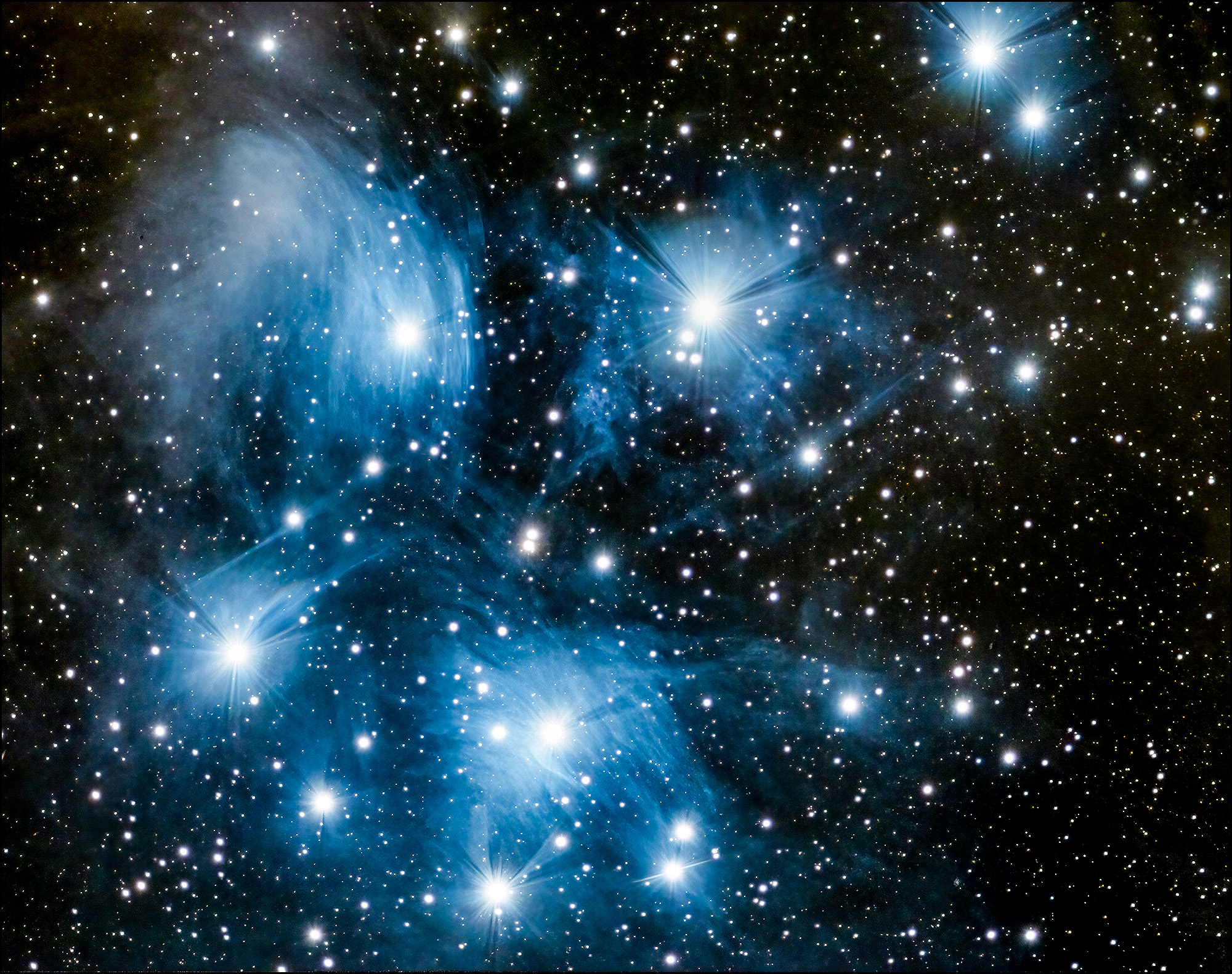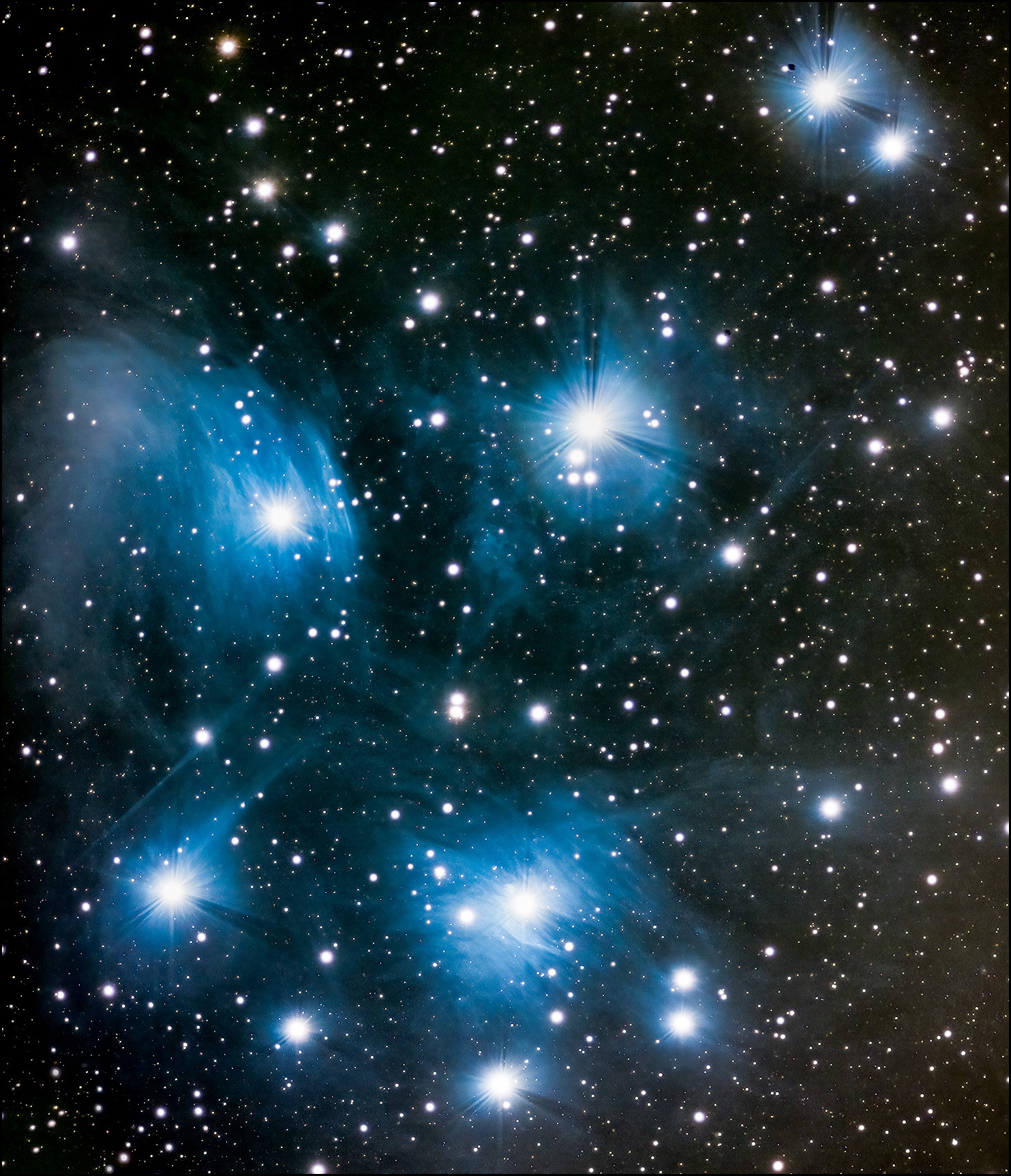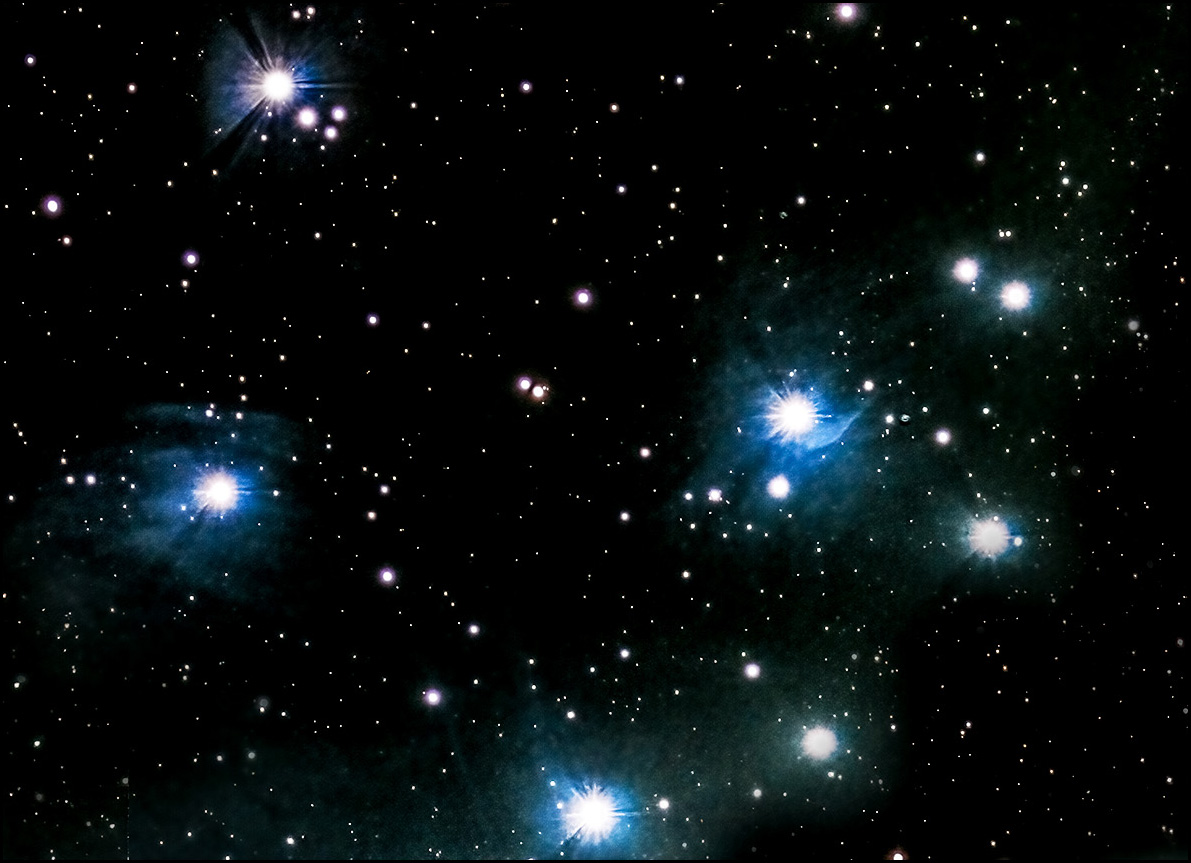I was out in the desert last night trying to squeeze in an astrophotography session while the moon was still down but before the weather turned bad. The moon played its role nicely, but the weather didn't.
The weather report had said the sky would be clear except for a couple of hours around 6 pm. That was fine, so I packed everything up and headed out. By the time I got to Indio, however, I was heading straight into the heart of darkness. This wasn't just a few clouds blowing in and then blowing out, it was a complete blackout.
But it was pretty localized. According to my phone, the storm hadn't made it out to either Needles or Blythe, so I headed in that direction for another hour and eventually found clear skies.
Last night's target was the Pleiades, a source of frustration for the past month. They're only visible for a couple of hours at the beginning of the night, and I kept missing my window whenever I'd go out to image them (bad traffic, equipment problems, human error, etc.). This time I finally got them.
The image at the bottom was taken from my backyard. The stars themselves are visible, but there's way too much ambient light to see the delicate tracery of the dust cloud that surrounds them.
The middle picture was constructed from a test series taken Saturday night at Palomar Mountain. It was much better thanks to the darker skies and the 300-second exposure I used.
The top image is my final effort. I took it in the desert last night using an exposure of 400 seconds. The sky was only so-so, and I probably should have used an even longer exposure since my telescope's aperture is a slow f/9. Still, it's pretty good. The stars are sharp, the dust cloud is well formed, and the colors turned out nicely.
This weekend was my first real test of the Esatto electronic focuser I bought last month. It's great. It autofocuses in just a couple of minutes, and it keeps focus regardless of how the telescope moves. It makes setup way, way faster and easier than it was with my old, sloppy manual focuser.




Subaru's logo is a stylized version of the Pleiades...
https://jalopnik.com/physicists-finally-have-an-answer-for-why-the-subaru-lo-1845985025
Thanks for this info! Now, why is the Alfa-Romeo logo a sea serpent swallowing a man?
Don't worry about it. I located the wikipedia article, and here's what it said:
Original logo
Alfa Romeo's logo incorporates two heraldic devices traditionally associated with its birthplace, the city of Milan: A red cross, from the emblem of Milan, and the biscione, a big grass snake swallowing a child—emblem of the House of Visconti, rulers of the city in the 14th century.[57][58][59]
The logo was originally designed in 1910 by a young Italian draughtsman from the A.L.F.A. technical office, Romano Cattaneo.[60]
Fantastic!
Could be the backdrop to stellar fantasies of exploration and conquest!
How come there’s only 7 of them?
For predicting the weather, I use this site: https://www.cleardarksky.com/csk/, and adjust it to the place I want to observe.
It's really hard to do better, for reliable weather reporting.
Yep, I use that too. But I also use standard weather services for more up-to-date forecasts.
I'll take the wallpaper, the sheets and the tee shirt.
Apropos of nothing, the Pleides featured prominently in a recent Nova, in which researchers were tracing the path of Hannibal's route through the Alps. The historical account of when the Pleides were visible helped to lock down both the season and features of the route taken.
Can you talk a little about lens flare tyoe artifacts that might be in these photos?
Why is focusing so hard? Everything you’re photographing is at infinity.
>Why is focusing so hard? Everything you’re photographing is at infinity.
That is actually an excellent question. Several factors at work:
1) Autofocus doesn't work at night
2) The infinity stop on most lenses is actually just an approximation
3) There's no opportunity to stop down as in terrestrial photography
4) The night sky is a harsh photographic environment whose tiny stars and
high contrasts amplify the visual appearance of unsharpness
5) The depth of the critical focus zone is miniscule. For my refractor, it's
about ten microns (i.e., move the focuser 6 microns in or out and
focus visibly degrades). For Kevin's, at f/9, it's probably a little better,
but still not much.
Nice capture on the reflection structure there! I would argue that you might have still more tasty nebulosity if you took the black point a smidge down, but the high-contrast look is a valid artistic choice too, I gotta admit. Envious that you're getting some clear skies, I haven't had a photon on a camera since Thanksgiving. Good show. Talk about your pinpoint stars, wow, your guiding has got to be just super. This is a single 400-second exposure? That's hecka dust-catching for that amount of integration time.
The third pic threw me for a second, then I figured it out. The first two have Pleione and Atlas in the upper right, and Sterope 1 and 2 are lower right. The third, (backyard), has Sterope 1 and 2 in the upper right and rotated about 90 degrees. Pleione and Atlas are out of the picture. These are all great shots. I like the second one best -- you get the dust clouds, but for me it gives the best visual feel for the density of the cluster.